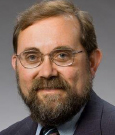In assessing a cancer treatment, cost and value are two key factors. So how, the moderator asked, do they enter into your everyday decisions?
Tanisha Carino, PhD, Executive Vice President of Avalere Health, was speaking to a clinical oncologist, a patient advocate, a pharma executive, and a health insurance leader, all panel members at the second national conference on Turning the Tide Against Cancer Through Sustained Medical Innovation, held recently in Washington, DC.
The panel was one part of the daylong meeting, convened by the Personalized Medicine Coalition, the American Association for Cancer Research, and Feinstein Kean Healthcare to explore two major issues: how to foster a shift to patient-centeredness in cancer research and care delivery and how to address cost and value in ways that align with patient-centeredness and scientific progress.
The answers to Dr. Carino’s question revolved around the difficulty of defining value and how definitions vary by age, circumstances, and other factors; the need to discuss and define value with each patient, individually; and how, practically, to foster and implement this patient-centered approach to care.
Defining Value
The major components of value, panelists agreed, are a treatment’s efficacy, toxicity, and cost. They also agreed that efforts to translate those into treatment decisions soon run into difficulty.
Even efficacy can be hard to pin down, said Stephen L. Eck, MD, PhD, Global Head of Medical Oncology Sciences at Astellas Pharma Global Development. “The technical success of a new drug is something you can grapple with, but still you typically don’t know the true efficacy at the end of clinical trials,” he said. One reason is that clinical trial populations are carefully selected and the regimens carefully controlled; in the “real world” of patients, results can be different.
Many questions are addressed later, after the pivotal trial takes place and the drug is approved. “One of the biggest problems for industry,” he said, is that clinical value keeps on emerging once a drug is on the market. Postmarketing studies, for instance, look at efficacy in specific populations, such as people in different parts of the world, or people with a particular biomarker. There is a continuous process of reassessment.
Moreover, the data, once available, may be hard to access. “The problem is that data are in silos,” said Michael Kolodziej, MD, National Medical Director for Oncology Solutions at Aetna. “It’s not accessible to all.”
And efficacy is only one component of value. “There are a whole host of psychosocial issues” that determine a patient’s definition of value, which a trial doesn’t take into account, said Patricia J. Goldsmith, the CEO of the patient advocacy organization CancerCare. Cost considerations involve not only the size of patient copays, but the costs of child care, transportation, lost employment, and more, she said.
The decisions of the U.S. Food and Drug Administration (FDA) and other agencies are, of necessity, based on data from large studies. But how do you use data from a large population to tailor treatments for an individual patient? “Value is very nuanced, very complex,” said Richard L. Schilsky, MD, Chief Medical Officer for ASCO.
Clearly, panelists agreed, value has to be defined differently for each patient. But how does an oncologist do that?
Communication
Addressing the nuances of value for an individual patient comes down to communication and patient engagement, Dr. Schilsky said. But he and other panelists also noted the barriers to communication, including time. Physicians are not reimbursed, under current payment systems, for time spent on communication.
Moreover, communication cannot be a one-time event. “Things change, people forget. It’s a continuing process,” Dr. Schilsky said.
“We need a paradigm change,” said Ms. Goldsmith. “We’re putting [physicians] in a situation with little support or reimbursement for patient engagement. My belief is we have to invest in educating patients to be their own advocates.”
ASCO is now developing a framework for doctors and patients to use as a basis for discussing the value of various therapy options, which may help overcome some of these barriers. It will include outcome data from large trials, cost, potential toxicity, hospitalization rates, and more. Sitting with the oncologist, patients will be able to discuss the parameters of most value to them personally, Dr. Schilsky said.
The Turning the Tide Against Cancer initiative has published an issue brief, distributed at the meeting, which includes 13 policy options to support patient-centered cancer research and care and to address cost and value in cancer care. Directed at the FDA, the Department of Health and Human Services, and other agencies, including Congress, the options “are intended to represent a set of initial, meaningful steps that can be taken in support of cancer research and care that is innovative, efficient, and patient-centered,” according to the issue brief. It is available at turningthetideagainstcancer.org/activities-reports/reports-resources. ■
Disclosure: Dr. Carino is Executive Vice President of Avalere Health. Dr. Eck is a full-time employee of Astellas Pharma, Inc, and a member of the Board of Directors of the Personalized Medicine Coalition. Dr. Kolodziej is National Medical Director for Oncology Solutions at Aetna. Ms. Goldsmith is CEO of CancerCare. Dr. Schilsky is Chief Medical Officer of ASCO.





